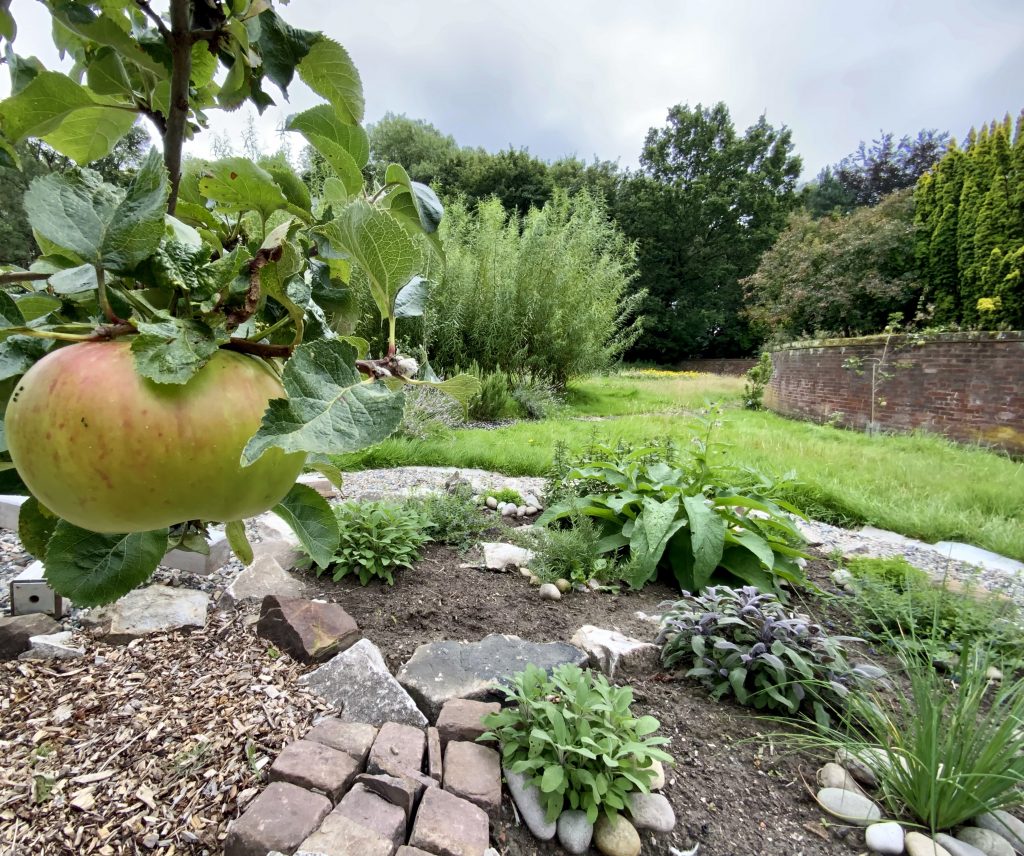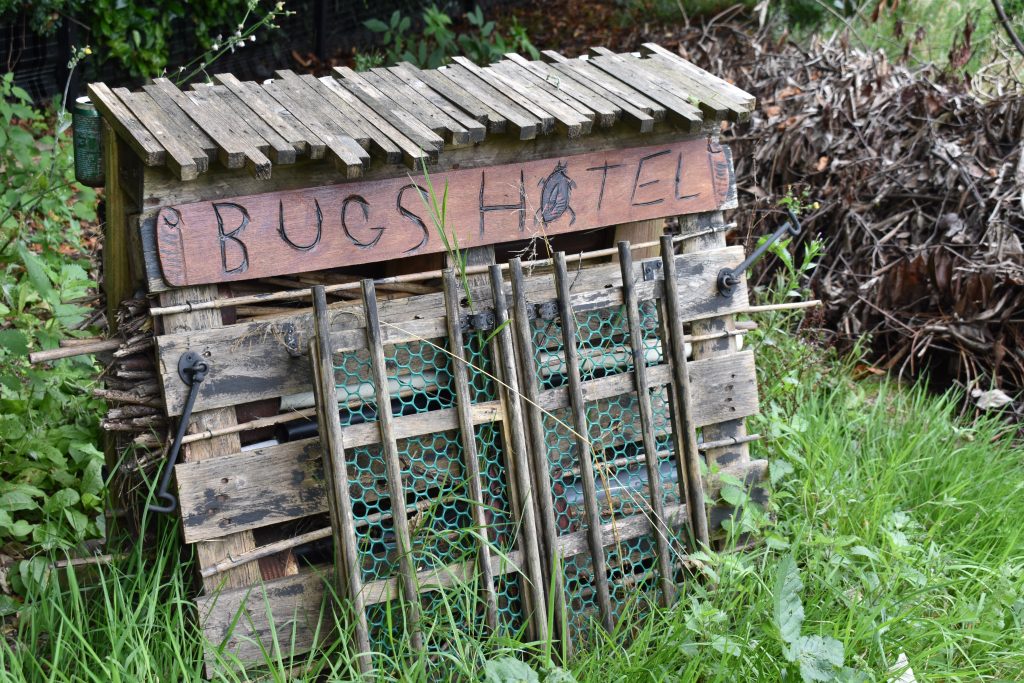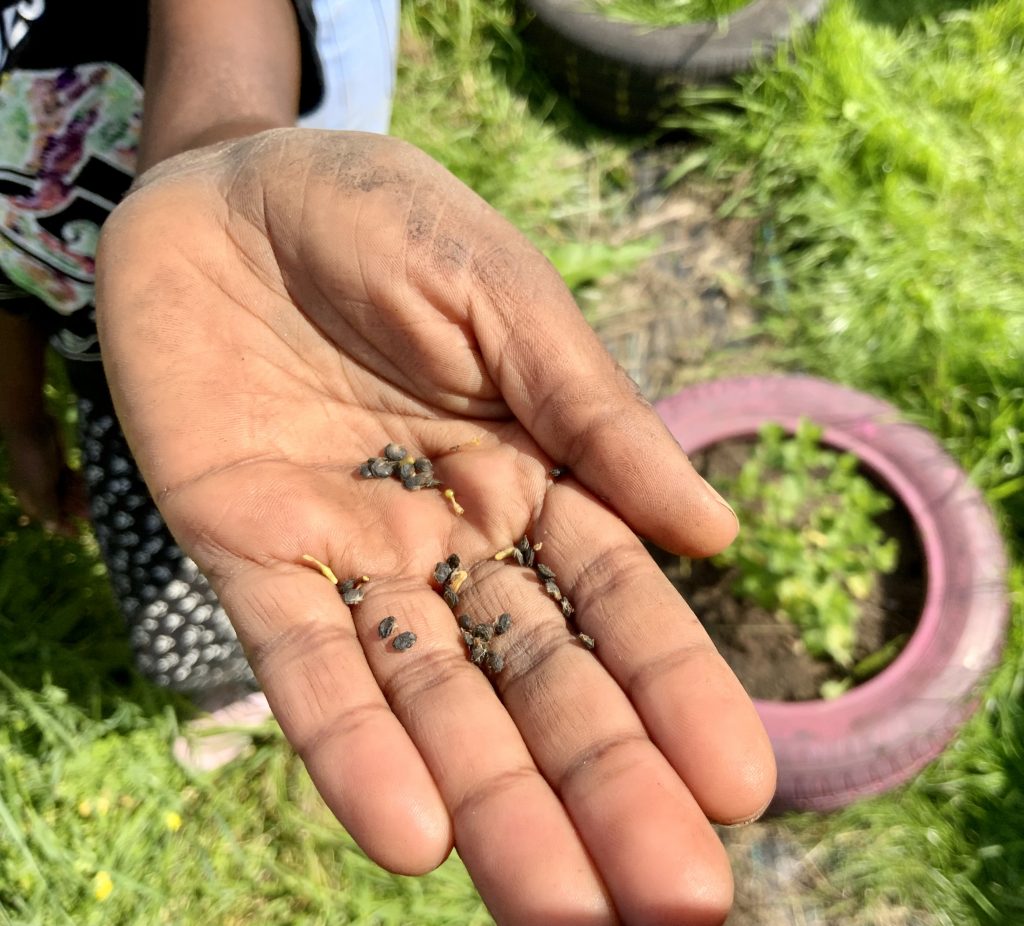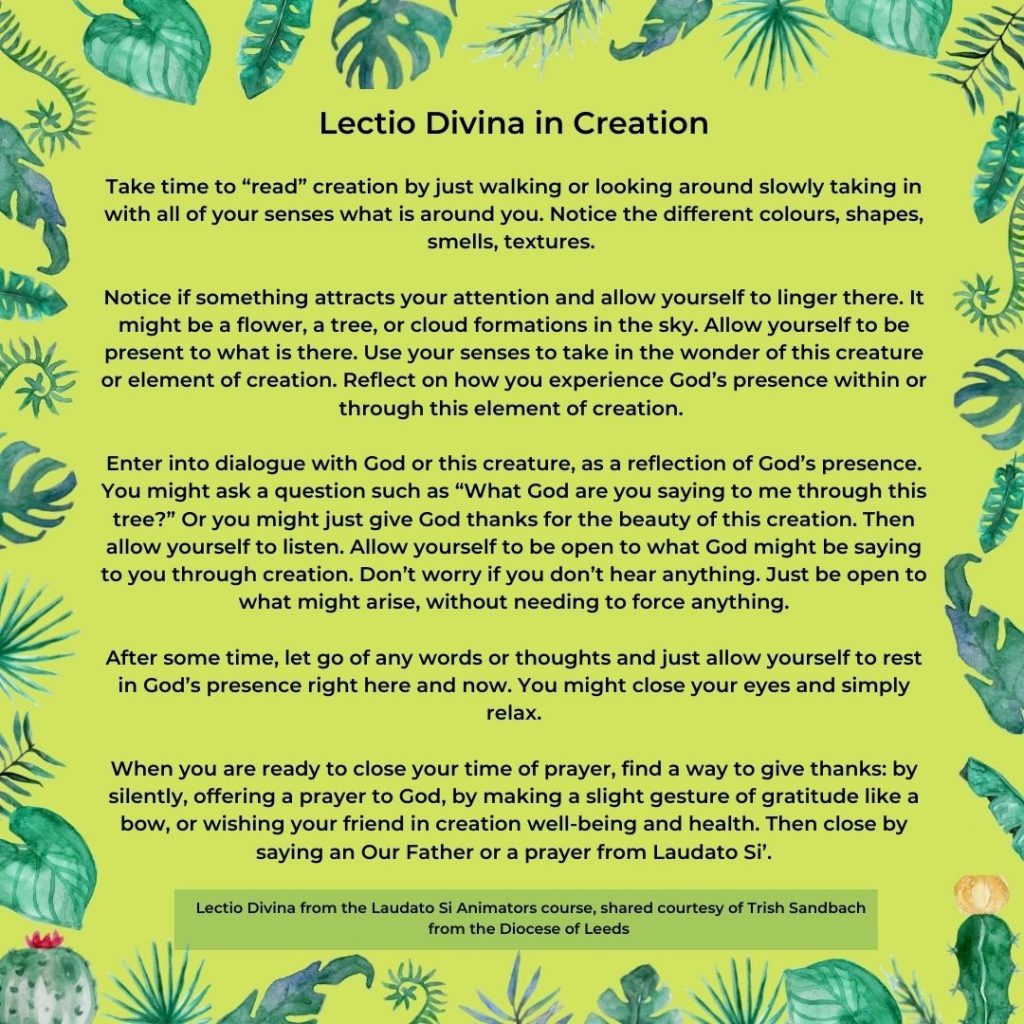
Gardening for wildlife
Thursday 9th September 2021By Dr Emma Gardner, Head of Environment, Diocese of Salford
We have the means to create beautiful spaces for God’s creation. And during the Season of Creation there is no better time to start planning, especially as this year’s theme is around ‘A home for all? Renewing the Oikos of God’. For many of us we can start by creating a space for wildlife in our school and parish gardens, or gardens, patios and balconies at home.
Here are ten tips to help you start.
- Understand the space.
Take some time to sit, watch, listen and reflect. Look around, notice the different shapes, patterns, smells, colours, heights, textures, creatures, trees, plants and people. Ask God “What can I do with this space”. You may want to pray on this, read exerts from Laudato Si’, find some nature poetry or just relax in God’s presence.
- Plan the areas you need in the space you have.
This will vary from space to space and will develop from point 1 above. You may be working in your parish and want to create a community space as well as a wildlife garden or you may have plans to grow your own food alongside a space for wildlife. Make sure you plan alongside the time you have to look after the space and the funding you have or need for larger projects. When planning, you may have some features that you want to retain or repurpose. When I moved into the house I live in now, the garden was very low maintenance garden with little plant life and wildlife. I spent some time in the garden and decided I needed a greenhouse, compost heap, storage space, a shed, raised beds, flowers and shrubs for pollinators and birds, herb beds, water, some medium sized trees, messy bits left for nature and a place for my husband and I to sit, read, reflect and eat. The garden came with decking, built over the old driveway and a broken tiered fountain. I planted a dwarf apple tree in an old wooden barrel, and positioned this on the decking, and repurposed the fountain, using the top tier as a bird bath and planted the lower larger tier with pond and marsh plants.
- Provide homes, shelter and corridors for wildlife.
You can provide more natural features, such as a log pile, waterbodies, shrubs and trees for example, or artificial features, such as bird boxes, bat boxes and insect hotels. A mix of the two is best. Make sure you leave untidy spaces and don’t worry too much about plants often referred to as weeds. Plants like dandelions and nettles are an important food source to pollinators. People can also benefit; dandelion tea has many health benefits. Where possible, think about corridors for wildlife to travel along and make sure there is space for wildlife to come into and out of your garden. I recently made sure there was space for a hedgehog to get under our gate and into next doors garden. You do not need large gardens to create wildlife corridors…a corridor for insects doesn’t need as much space as you think!
- Provide food and water.
Planting a variety of plant species will provide food, as will the creatures that live in the soil and decaying pieces of wood and vegetation. During the winter and periods of bad weather, when natural food sources are sparse, perhaps put some bird food out, however, do not overfeed the birds in spring and summer…you want them to eat garden pests, your natural garden army. It is important to provide water. This can be anything from a pond or a birdbath to some water in a bowl or bee bath. Whatever you provide, make sure there is water in winter too and if any ice forms, don’t forget to break it to allow wildlife to drink.
- Plant a variety of species.
Many plants need specific light and soil conditions, therefore find out as much as you can about the soil and identify the sunny or shady spots. Aim for a variety of annual and perennial flowers and herbs, and if you have the space, evergreen and deciduous shrubs. You want to make sure you have plants for every season, such as plants that flower in the winter like snowdrops and those that flower late in the year like some varieties of honeysuckle. When purchasing plants, look for plants potted in peat-free compost and plastic-free pots. If you can’t find plastic-free pots, find a nursery where you can return pots or reuse them in your garden.
- Garden without pesticides and chemicals.
Our insect population is in trouble. Insects have declined by 75% in the last 50 years. By avoiding pesticides and chemicals helps our local insect population and the predators that eat the insects. It may take time for your garden to find the right balance with between pests and predators, but it is worth persevering. And the more varied your garden is the more resilient it becomes.
- Make your own compost.
Not only can you use this on your garden, it provides a habitat for wildlife. You can buy compost, if you do, make sure it is peat free. Peat bogs are a precious habitat, they are home to valuable species and store carbon, and only renew at ~1mm a year!
- Save your own seeds and/or buy organic/heritage varieties.
I have been saving seeds for a number of years now, which has meant over time the amount of seeds I buy has reduced. However, I still need to buy some seeds and when I do I buy organic and heritage varieties. I like seeds with a story. I also swap and share seeds. I have some lovely agrimony growing, a fair swap for some of my borage seeds in 2018.
- Keep a diary.
Not only can it help you remember which species you have seen and when, and your sowing, potting and planting dates, it is so interesting (and valuable) to read back on the previous year to help plan for the future and learn from your mistakes. As our climate changes our gardens will have to adapt. Having a diary will help us all on our journey to living in a changing climate.
- And finally, watch, listen, learn, reflect and enjoy.
Spending time in nature can have many health and wellbeing benefits. During this Season of Creation, take the opportunity to renew your relationship with all creation. Perhaps use the process of Lectio Divinia as explained below:

Gardening for wildlife is such fun with lots to learn. There are lots of great websites that can help, for example:
- https://www.wildlifetrusts.org/gardening
- https://www.rspb.org.uk/birds-and-wildlife/advice/gardening-for-wildlife/
- https://www.woodlandtrust.org.uk/blog/2019/03/wildflowers-for-bees/
- https://www.youtube.com/watch?v=C1AjhorvZc0
We would love to hear your experiences, share your thoughts and see pictures of your wildlife spaces. Please get in touch via Facebook, Twitter, or Instagram.
Click here to download your own copy of this resource.
Tagged | Environment | Laudato Si Centre



